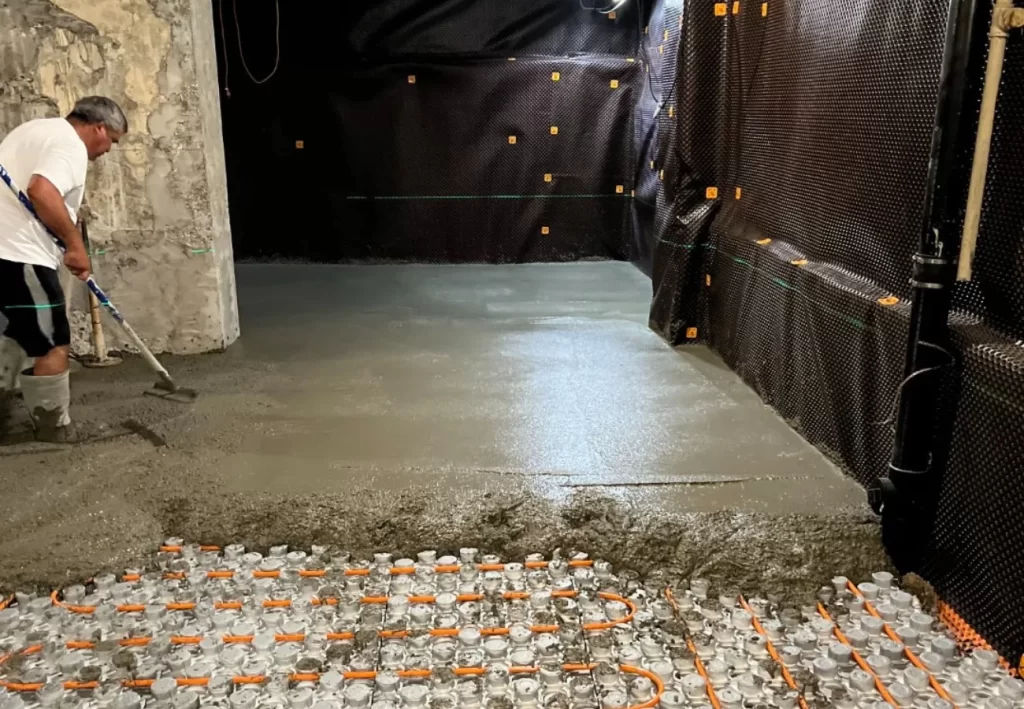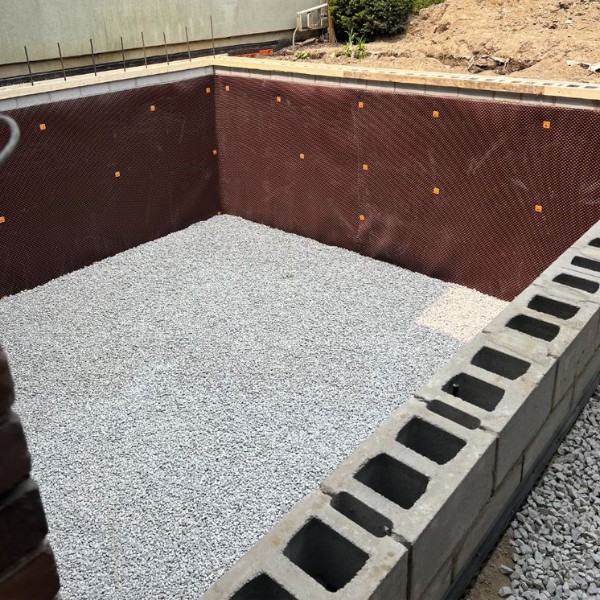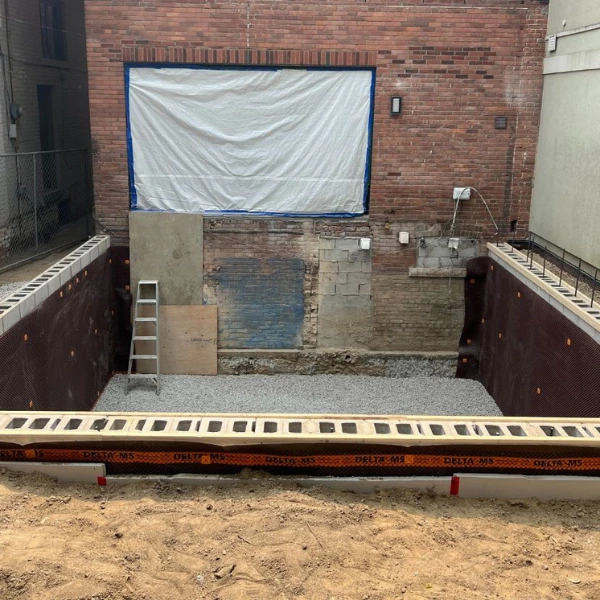Toronto’s charm comes with age, but so do its infrastructure problems. Many of the city’s sewer systems date back decades, some even to the early 1900s, when population density, modern plumbing systems, and extreme weather patterns were nowhere near what they are today. The result? An outdated underground network that struggles to keep up, leading to frequent basement flooding, water seepage, and foundation damage in older homes.
Old Pipes, New Problems
Toronto’s combined sewer system (where stormwater and sewage share the same pipes) was once an engineering marvel, but now it’s showing its cracks. Heavy rainfall can easily overwhelm these old pipes, forcing water to back up into homes through floor drains or foundation cracks. Even a small amount of excess pressure in the system can push moisture through microscopic gaps, leading to long-term foundation issues that many homeowners don’t notice until it’s too late.
It’s not just a flooding issue, it’s also about foundation integrity. Prolonged exposure to damp soil weakens the structural base of your home, allowing cracks to form and expand over time. And as these cracks widen, more water gets in, creating a vicious cycle that only professional foundation repair or waterproofing can fix.
Why Older Neighbourhoods Are More Vulnerable

Areas like The Beaches, High Park, Leslieville, and parts of East York have some of Toronto’s oldest homes, often built before the city’s sewer systems were separated. That means these properties are still connected to outdated combined sewers and often lack proper drainage systems.
These neighborhoods also sit on mixed soil types, which don’t always drain efficiently. Combine that with heavy seasonal rain, snowmelt, and fluctuating water tables, and you have the perfect recipe for basement leaks and foundation damage.
Homeowners in these areas are noticing more frequent backups during storms, even when their homes are equipped with sump pumps or backwater valves. The truth is, these solutions help, but they can’t completely offset the pressure caused by an aging citywide system.
The Link Between Sewers and Foundation Damage
When underground water levels rise faster than they can drain, the soil around your home expands. That hydrostatic pressure pushes against your foundation walls, causing cracks, bowing, or leaks. It’s not that your foundation is weak, it’s that it wasn’t designed to handle these modern stressors.
In neighborhoods with combined sewers, this problem is magnified. The pressure doesn’t just come from rainwater, it also comes from the additional volume of wastewater in the pipes. That’s why even well-built homes can develop foundation issues seemingly out of nowhere.

What Homeowners Can Do
You can’t change the city’s sewer system, but you can definitely fortify your own home. Here’s how:
1. Basement Waterproofing
Exterior or interior basement waterproofing creates a barrier between your foundation and water. This helps prevent seepage during heavy rains and reduces pressure on the structure itself. If your home is older, waterproofing isn’t just a fix, it’s a long-term investment.
2. Foundation Crack Repair
Even hairline cracks should be sealed professionally. Ignoring small cracks is like leaving a window open during a rainstorm, water will find its way in eventually.
3. Install a Backwater Valve
A backwater valve is a must-have in Toronto. It prevents sewage from backing up into your home during system overloads. The city even offers a subsidy program to help homeowners install them, making it both practical and affordable.
4. Improve Yard Drainage
Your home’s surroundings can play a huge role. Poor grading or clogged gutters can cause water to pool near your foundation. Make sure your downspouts extend at least six feet from your home and your landscaping slopes away from the building.
5. Foundation Reinforcement
For homes already showing signs of shifting or settling, foundation reinforcement might be necessary. This process stabilizes the base of your home so it can withstand pressure from water and soil movement.
The Bigger Picture – Climate Change and Infrastructure Stress
Toronto’s weather patterns are changing. We’re seeing heavier downpours and more frequent freeze-thaw cycles, both of which put additional strain on old pipes and home foundations. As the city upgrades its infrastructure over time, these issues might reduce, but homeowners can’t afford to wait decades.
A proactive approach is the best defense. Think of it like giving your home a raincoat before the storm hits, rather than scrambling for towels after the flood.
How IcyReno Can Help
At IcyReno Waterproofing, we’ve seen firsthand how old sewer systems can wreak havoc on even the strongest foundations. Our team specializes in foundation repair, waterproofing, and underpinning solutions designed for Toronto’s unique soil and drainage conditions. Whether you’re dealing with minor cracks or serious structural concerns, our experts can assess, repair, and future-proof your home.
If you live in an older neighbourhood or have noticed signs like damp walls, musty smells, or cracks in your basement, now’s the time to act. Preventive work today can save you thousands in damage tomorrow.
Protect your home before Toronto’s aging sewers test its limits.
Need help reinforcing your foundation? Contact IcyReno Waterproofing for a free assessment today!

